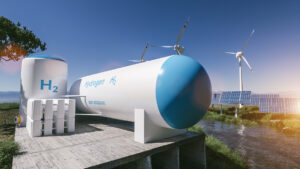Considering the large number of exploded transformers equipped with all possible protections, monitoring technologies or plants fully equipped with fire extinguishing systems, it is now obvious that Fast Depressurization Systems defined in the NFPA Recommendation 850 are the sole reliable method to avoid damages of transformer explosions and fires.
Other solutions to the TRANSFORMER PROTECTOR
No other solution has been able to demonstrate the compliance with the NFPA Recommendation 850 defined in the article “Understanding the NFPA 850 Recommendation for Preventing Transformer Explosions in Electricity Generating Plants”. This includes live tests involving electrical arcs in sealed large oil-filled transformers with arc energies higher than 1 megajoule (MJ).
Flexible and reinforced tanks
Flexible Tank technologies are typically only substantiated by marketing copy with very vague claims regarding its performance with no published reference to simulations, results and live tests on power transformers as defined above for the NFPA Recommendation 850.
Conventional transformer electrical and mechanical protections
Considering the large number of exploded transformers, equipped with all possible protections and monitoring technologies, it is obvious that they are all too slow to cope with the very fast consequences of low impedance faults. This includes gas monitoring systems, pressure relief valve, Buchholz, rapid pressure relay and electrical circuit breakers.
Firewalls and fire extinguishers
These passive solutions are only trying to limit the consequences of oil fires. However, in most of the numerous cases, fire has damaged the surrounding area and nearby transformers. In some cases, entire power plants and substations have been destroyed while fully equipped with firewalls and fire extinguishers.




